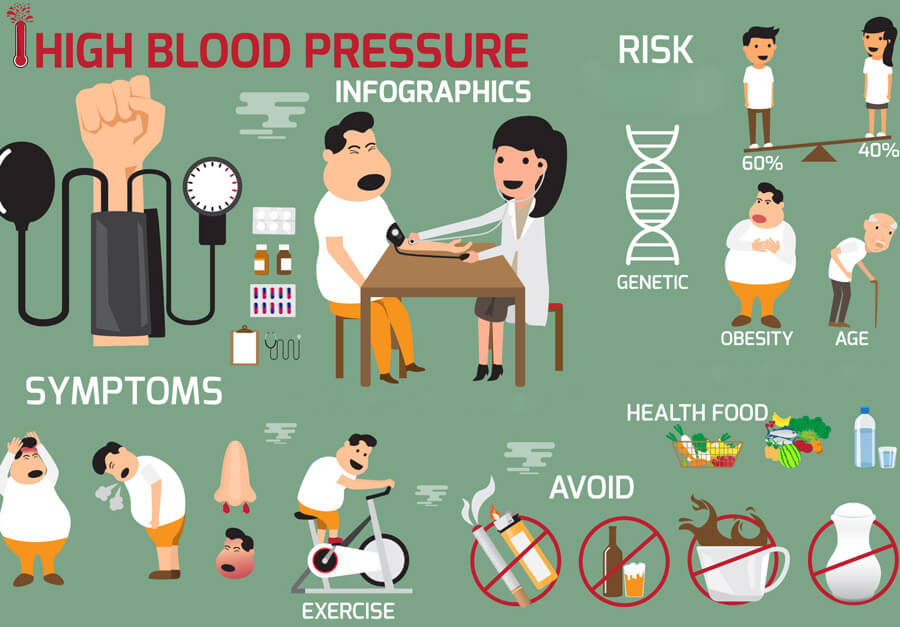Am I experiencing heart disease risk factors?

What harms / causes heart disease and what puts you at risk for heart disease?
Heredetary and lifestyle factors may increase your chance of heart disease:
- Smoking and secondhand smoke
- Being inactive—a sedentary lifestyle
- Consuming too much alcohol
- Consuming a diet high in cholesterol and saturated fats
All of these factors increase the risk of plaque building up inside the arteries that supply blood to the heart. Your body makes plaque from cholesterol, fat substances, cellular waste products, and a clotting material in the blood that can cause heart disease.
Plaque buildup can partially or completely block off an artery. Plaque can also break off and travel through the blood until it gets stuck. This is called a blood clot. In both these instances, blood flow to the heart can be blocked. This can lead to a heart attack.
During a heart attack, there is pain in the chest that continues down the arm coupled with shortness of breath. Women can also experience nausea, unexplained tiredness, and jaw pain. Men don’t typically report those heart disease symptoms.
What is a diet for heart disease?
There are different versions of heart disease diets. The DASH diet, Mediterranean diet, low-cholesterol diet plan, and low-salt diet plan are all are appropriate heart disease diets. Follow these 10 tips to start implement a heart disease diet:
- Decrease your salt intake – keep your salt intake between 1500 mg and 2300 mg per day. That’s less than 1 teaspoon a day. Remove the saltshaker from the table and reduce the amount of salt you add when you cook.
- Season with herbs and spices – replace salt with herbs and spices such as oregano, chili powder, onion and garlic powder, turmeric, parsley, and ginger.
- Eat a rainbow of colors – include a variety of colors when picking out and eating your vegetables and fruits.
- Increase your vegetable intake – fill half your plate with high-fiber vegetables such as carrots, sweet peppers, or cauliflower. Choose fresh, frozen, or canned veggies that do not have added salt or sauce.
- Boost your fruit intake – use fruit as a snack with protein, such fresh melon and low-fat cottage cheese. Fresh, frozen, or canned (in own juice) will work. Fruit can satisfy that after meal sweet tooth with a burst of flavor.
- Look at saturated fat – decrease your intake of saturated fat to less than 7% of your daily calories. Eat less marbled meats, luncheon meats, butter, and coconut oil.
- Eat low-fat dairy – use 1% or skim milk for you cooking and coffee needs. And, opt for low-fat or skim yogurt in place of sour cream.
- Decrease your oil/fat intake – avoid deep fried foods and only use a splash of oil when cooking.
- Lose weight – incorporate moderate physical activity as you are able for at least 150 minutes per week and eat a nutritious diet.
- Make meal prep easy – subscribe to a heart healthy meal delivery service.
MealPro’s heart healthy meals are low in sodium and saturated fat. The meals are cooked with heart healthy olive oil. Lean protein is baked not fried. These meals are built taking into account vitamins and minerals that affect the heart and are served with a generous portion of colorful vegetables and helping of whole grains. The veggies and grains are both rich in needed nutrients and great sources of fiber.
- Turmeric Turkey – lean ground turkey seasoned with turmeric which is an anti-inflammatory spice. The turkey is served on a bed of whole grain brown rice along with a generous serving of green and yellow zucchini.
- Brussel Salmon – omega-3 rich baked salmon served on whole grain couscous. A serving of baked Brussel sprouts is included. Cauliflower Chicken – this is a colorful meal with cauliflower, broccoli, and shredded carrots served with lean baked chicken and a helping of whole grain brown rice.
- Sweet Potato Bowl – rich in protein, this meatless meal includes red kidney beans with basmati brown rice. It includes nutrient rich sweet potatoes garnished with parsley.
Who can benefit from heart disease diet plan?
A heart healthy diet is a good way for the whole family to eat. It can help decrease everyone’s risk of developing heart disease. And, eating to nourish your heart is satisfying and delicious. It also gives you the energy needed for a healthy, active lifestyle.
Do you have questions about eating heart healthy? Reach out to a registered dietitian or nutritionist in your area, and take control of your nutrition.